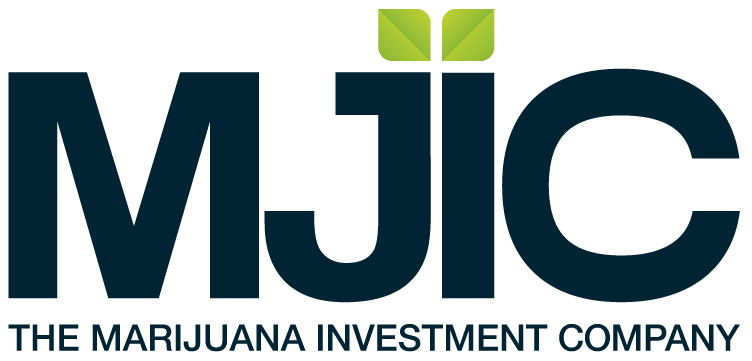By Ryan Barnes
This article originally appeared on MJINews on August, 13, 2015.
It has been a bit of a dry spell for decent IPOs in the cannabis space. But the rains have come down with the initial public offering of Devon, Pennsylvania-based Zynerba Pharmaceuticals (NASDAQ: ZYNE). A development-stage therapeutics company, Zynerba Pharmaceuticals issued its first shares to the general public on August 5, 2015, and in the early going investors have been near-manic about the offering. Shares posted their first post-IPO trade at $18.00/sh, then the typical IPO-day rollercoaster took over as shares slipped as low as $15.50 and as high as $22.25 before closing $16.25.
As of Friday morning those shares were going for $24.25, against the backdrop of a steeply declining NASDAQ as well as the iShares NASDAQ Biotechnology Index (ETF) (NASDAQ: IBB), the most relevant measurement of the space Zynerba operates in. Then, news of some high-profile additions to the board of directors sent shares up another 50% to $36.75, an astonishing three day move. In the three trading sessions since, shares have both dropped 25% and risen 35%.
While the moves in ZYNE are particularly extreme, it is not uncommon in the first few sessions after an IPO for trading to be exasperated when it involves a smaller capitalization company, which Zynerba is, and also when an IPO is in short supply, which Zynerba is with barely 3 million shares in the current float.
Company Background
More than a decade old, Zynerba is a pre-clinical stage company focused on synthetic cannabinoids for medical use. It is also focused on transdermal delivery technologies, which deliver through the skin. The company currently has just two main compounds under development, and they are both pre-stage 1, so a long way away from any kind of FDA approvals for the five indications Zynerba is targeting. The company is looking to prove transdermal cannabinoid efficacy for treating refractory epilepsy, fragile X syndrome (FXS), osteoarthritis, fibromyalgia and peripheral neuropathic pain.
Zynerba plans to start Phase I trials for its ZYN002 compound, specifically for the epilepsy indication, in the second half of 2015. The end market estimate for this indication is listed on the company’s S-1 filing as $1.7 billion, based on a potential patient population of 2.2 million. Management plans to also initiate Phase I trials in Australia this year for ZYN002, and begin Phase I trials of the ZYN001 compound for fibromyalgia in mid-2016. Because the ZYN001 compound is focusing on pain-based therapies, the company seems to have wisely gone ahead with its -002 compound first. Pain-based studies are notoriously long, subjective, and expensive to conduct—not the ideal opening setup for a smaller player like Zynerba.
For most of the five indications listed above, Zynerba’s therapies have been thrown around as possible “first line” uses for cannabinoids. And while Zynerba may indeed have a novel therapeutic approach when considering its delivery technologies, it should be noted that Zynerba is by no means the only company trying to test cannabinoids for these conditions.
Comparisons to Peers
Some investors may notice that Zynerba looks an awful lot like another company that is also publicly traded—Nemus Bioscience (OTCQB: NMUS). Only a $19 million stock at the moment, it is down nearly 80% on the year already. Nemus is also a development-stage pharma pursuing synthetic cannabinoids, and for some of the same indications.
With Zynerba trading at over 10 times the valuation of Nemus, despite having no clear clinical lead, investors may rightly ask if one is being valued much too high, or the other much too low? There are some clear differences between the two companies, however, that lead to why Zynerba looks much more attractive to investor’s eyes:
Management Track Record – Zynerba has some serious resume heft at the top. Its leaders have not only taken other transdermal drugs, which are inherently harder to get approved, through the FDA approval process, the company has also sold its drugs/companies up the chain and delivered exceptional results for prior shareholders. This is a huge plus in Wall Street’s eyes, and a reason why despite the relatively small size of Zynerba, the company has attracted some heavy hitters to underwrite the IPO. Jefferies and Piper Jaffray are the lead bookrunners, and a $1.2 billion hedge fund participant has already invested via private placement last year.
A Clean IPO – There is an extra layer of credibility that Zynerba achieves by conducting a true IPO, and not a reverse-merger like Nemus, along with many other cannabis-themed stocks. While it is definitely cheaper to get public status by doing a reverse merger, it can cast a cloud of doubt over the business and its stewards when what used to be a shell of a mining or exploration company is now all of a sudden a cannabis stock.
The Zynerba Bull Case, Consolidated
Zynerba thinks that its transdermal delivery tech is the differentiator between it and competitors. It is the strongest part of the company’s intellectual property portfolio with 10 patents in the United States, and more than 30 abroad. By our account Zynerba is the only company with IP in the area of transdermal cannabis therapeutics. And the total “end market potential” for the indications Zynerba hopes to treat amounts to over $7 billion, so there is plenty of runway for success.
Also, two years ago GW Pharmaceuticals (NASDAQ: GWPH) was about the same size company as Zynerba, and traded for about $9 a share. Now they trade for over $110 and GWPH is a $2 billion plus company. If Zynerba shows itself to be on a similar flight path to GWPH by the time early clinical trials begin, expect to see some serious M&A buyers lining up to make a bid for Zynerba.
The Bear Case, Consolidated
We can just start with the obvious—no cannabinoid-based therapeutics have been approved by the FDA yet. It is a huge hurdle, one that most watchers think will be crossed by GW Pharmaceuticals if anyone. GW has stage II/III products and has already spent tens of millions on getting to that point.
Zynerba is what is known as a development-stage stock, which is another way of saying the company is not making any money yet. In fact, Zynerba is at least five years away from it if the entire history of the pharmaceutical industry is any indicator. It can take more than eight years to take a compound through from Phase I to FDA approval, and that is just in the U.S.
That is money Zynerba has yet to spend, but will need to. The company indicated in its S-1 that about $30.5 million of the IPO proceeds would go towards R&D of its lead compounds. But that will only get the company through the next two years, per the S-1 guidance, and that is assuming there are no stumbles or delays along the way—something we don’t often see in this space.
On behalf of patients we would love to see this company succeed in its approach, but only the clinical data will tell us if the company’s transdermal tech, which they are kind of betting the farm on, will actually prove to be a better delivery method than standard oral therapies. Until then, expect the stock to trade like any other biotech—or any other cannabis stock—with extreme volatility.










